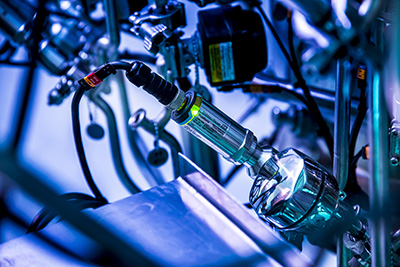 Endress+Hauser has announced the iTHERM TrustSens hygienic RTD, the world’s first self-calibrating temperature sensor. TrustSens’ self-calibration process functions in situ and provides the necessary documentation to meet the conformance requirements for various regulatory agencies.
Endress+Hauser has announced the iTHERM TrustSens hygienic RTD, the world’s first self-calibrating temperature sensor. TrustSens’ self-calibration process functions in situ and provides the necessary documentation to meet the conformance requirements for various regulatory agencies.
Traditionally, calibration cycles for standard temperature sensors in critical service are every six to twelve months. This leaves the potential for undetected drift in the sensor between cycles. Such undected drift could lead to product quality issues or even a complete loss of the production run.
Many hygienic and aseptic processes require equipment cleaning on a regular basis with Sterilize in Place (SIP) procedures, typically after every batch. With TrustSens, the temperature sensor is calibrated after every SIP cycle. TrustSens, therefore, eliminates the risk of an undetected calibration drift and the risk of bad batches. It also reduces the need for frequent calibrations by verifying the sensor is working as designed in between manual calibration cycles.
TrustSens has a built-in, high precision ceramic reference based on the Curie Point of the reference material; that is, the temperature at which its ferromagnetic properties abruptly change. The change can be detected electronically. For applications using SIP operations—where steam at 121°C (250°F) is used to sterilize equipment—TrustSens uses a reference material with a Curie Point of 118°C (244°F).
When the SIP process reaches 118°C, the reference sensor in TrustSens sends a signal. Simultaneously, the TrustSens RTD measures the temperature. Comparison between these two values is a calibration identifying errors in the temperature sensor. If both sensors see 118°C, the RTD sensor is still in calibration. If the measured deviation is outside set limits, the device issues an alarm or error message, which is also displayed via a local LED.
The TrustSens calibration procedure can store up to 350 calibrations which can be submitted to various regulatory agencies for verification of compliance issues. It can also produce printable and uploadable audit-proof calibration certificates using asset management software such as Endress+Hauser’s FieldCare.
TrustSens has built-in Heartbeat Technology to monitor the sensor and send warnings when it detects a sensor failure, drift or other measurement errors. The TrustSens sensor measures temperatures from -40 to 160° C (-40 to 320° F), works in pressures up to 725 psi, and provides a 4-20 mA output with HART. The 4-20 mA output represents the measured process variable, and the HART signal contains diagnostic and status information.
The sensor is available with a variety of hygienic process connections (e.g., 1/2 to 3-in. Tri-Clamp, Varivent, etc.). It can also be configured for direct immersion measurement or with a protective thermowell for easy removal from the process.
Endress+Hauser
www.us.endress.com/TrustSens
